Red Light vs Blue Light Therapy
Time:2023-12-25
In recent years, light therapy has become a popular treatment for various skin conditions and concerns. Two types of light therapy that are commonly used are red light therapy and blue light therapy. While both have been proven to be effective in improving skin health, they have different mechanisms and target different skin concerns. In this article, we will compare red light vs blue light therapy and explore their benefits and uses.
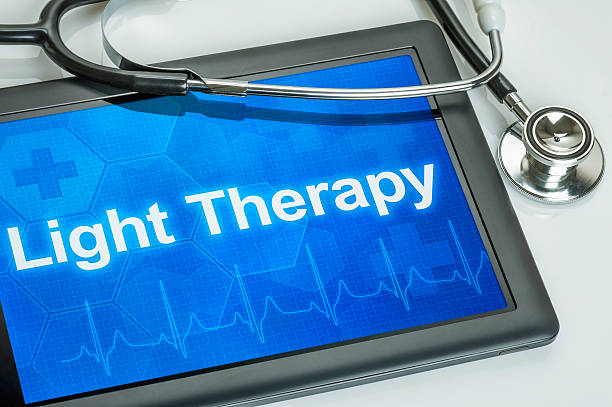
What is Red Light Therapy?
Red light therapy, also known as low-level light therapy (LLLT), is a non-invasive treatment that uses red light wavelengths to stimulate cellular activity. This typeof therapy has been used for decades to treat various medical conditions, but it has gained popularity in recent years for its skin rejuvenation benefits.
How Does Red Light Therapy Work?
Red light therapy works by penetrating the skin at a depth of about 8-10 millimeters, stimulating the mitochondria in the cells. This stimulation leads to an increase in the production of adenosine triphosphate (ATP), which is the energy source for cellular processes. This increase in ATP production helps to improve cellular function and promote healing and rejuvenation.
Benefits of Red Light Therapy
Stimulates collagen production: Red light therapy has been shown to stimulate the production of collagen, which is essential for maintaining skin elasticity and reducing the appearance of fine lines and wrinkles.
Reduces inflammation: The anti-inflammatory properties of red light therapy make it an effective treatment for conditions such as rosacea, eczema, and psoriasis.
Improves wound healing: Red light therapy has been used to promote wound healing and reduce scarring.
Increases circulation: The increase in ATP production also leads to improved blood flow, which can help to deliver oxygen and nutrients to the skin, resulting in a healthier complexion.
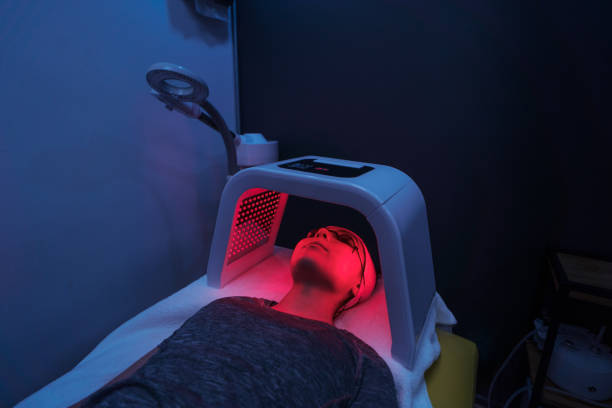
What is Blue Light Therapy?
Blue light therapy is a non-invasive treatment that uses blue light wavelengths to target and destroy acne-causing bacteria. It is commonly used to treat acne and other skin conditions such as psoriasis and eczema.
How Does Blue Light Therapy Work?
Blue light therapy works by targeting the bacteria that cause acne, known as Propionibacterium acnes. The blue light wavelengths penetrate the skin and activate a compound called porphyrin, which is produced by the bacteria. This activation leads to the production of reactive oxygen species (ROS), which ultimately destroys the bacteria.
Benefits of Blue Light Therapy
Treats acne: Blue light therapy has been proven to be an effective treatment for acne, reducing the number of acne lesions and improving overall skin appearance.
Reduces inflammation: Similar to red light therapy, blue light therapy also has anti-inflammatory properties, making it an effective treatment for conditions such as rosacea and eczema.
Non-invasive: Blue light therapy is a non-invasive treatment, making it a safe and painless option for those with sensitive skin.
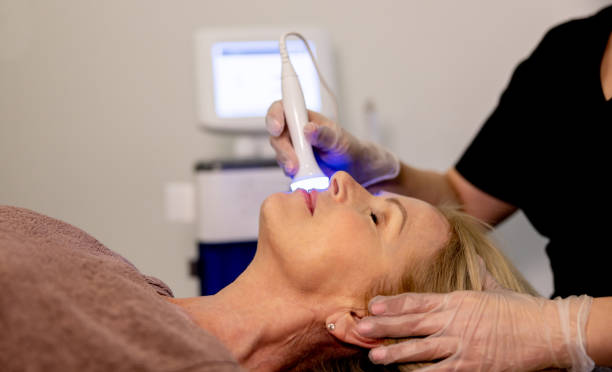
Comparison of Red Light vs Blue Light Therapy
While both red light and blue light therapy have their own unique benefits, they also have some similarities. Here are some key differences between the two treatments:
Targeted Skin Concerns
Red light therapy is primarily used for skin rejuvenation and anti-aging purposes. It can help to reduce the appearance of fine lines and wrinkles, improve skin texture and tone, and promote overall skin health. On the other hand, blue light therapy is mainly used to treat acne and other skin conditions such as psoriasis and eczema.
Mechanism of Action
As mentioned earlier, red light therapy works by stimulating cellular activity, while blue light therapy targets and destroys acne-causing bacteria. While both treatments have different mechanisms, they both ultimately lead to improved skin health.
Treatment Time
The treatment time for red light therapy is typically longer than that of blue light therapy. Red light therapy sessions can last anywhere from 10-20 minutes, while blue light therapy sessions usually last around 15 minutes.
Side Effects
Both red light and blue light therapy are considered safe and have minimal side effects. However, some people may experience mild redness or irritation after treatment, which usually subsides within a few hours.
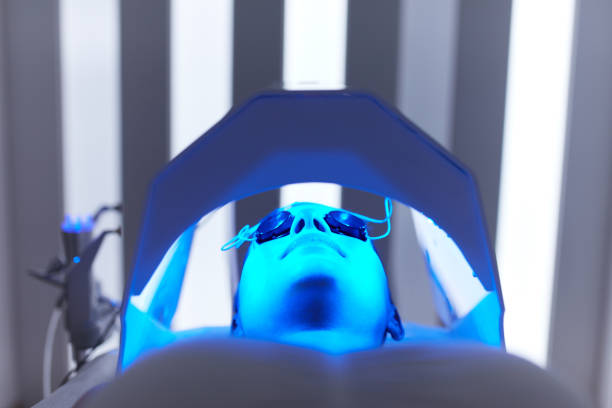
How to Use Red Light and Blue Light Therapy
Both red light and blue light therapy can be done at home using specialized devices. Here are some tips for using these treatments effectively:
Red Light Therapy
Cleanse your skin before treatment to remove any makeup or dirt.
Hold the device about 6 inches away from your skin and move it in a circular motion.
Use the device for the recommended amount of time, usually 10-20 minutes.
Repeat the treatment 2-3 times a week for best results.
Blue Light Therapy
Cleanse your skin before treatment.
Hold the device about 6 inches away from your skin and move it in a circular motion.
Use the device for the recommended amount of time, usually 15 minutes.
Repeat the treatment daily for best results.
Here are some of our best-selling products combining red and blue light therapy:
FITTOP 373 Gold Collagen Mask: This device utilizes five spectrums to comprehensively address facial aging issues.
FITTOP 377 Golden Glow III RF Beauty Device: Combining radiofrequency therapy, EMS, red light, and blue light therapy, this device offers a tighter and healthier skin appearance. It operates at a high frequency of 3.3MHz.
FITTOP II RF Beauty Device: Using 1MHz radiofrequency energy, this device provides all-around skin tightening.
Acne Light Therapy Device: This is a blue light treatment device that employs 415nm blue light to target and eliminate bacteria causing acne in the skin. This portable acne treatment device is small in size, convenient to carry, making it perfect for travel or on-the-go use.
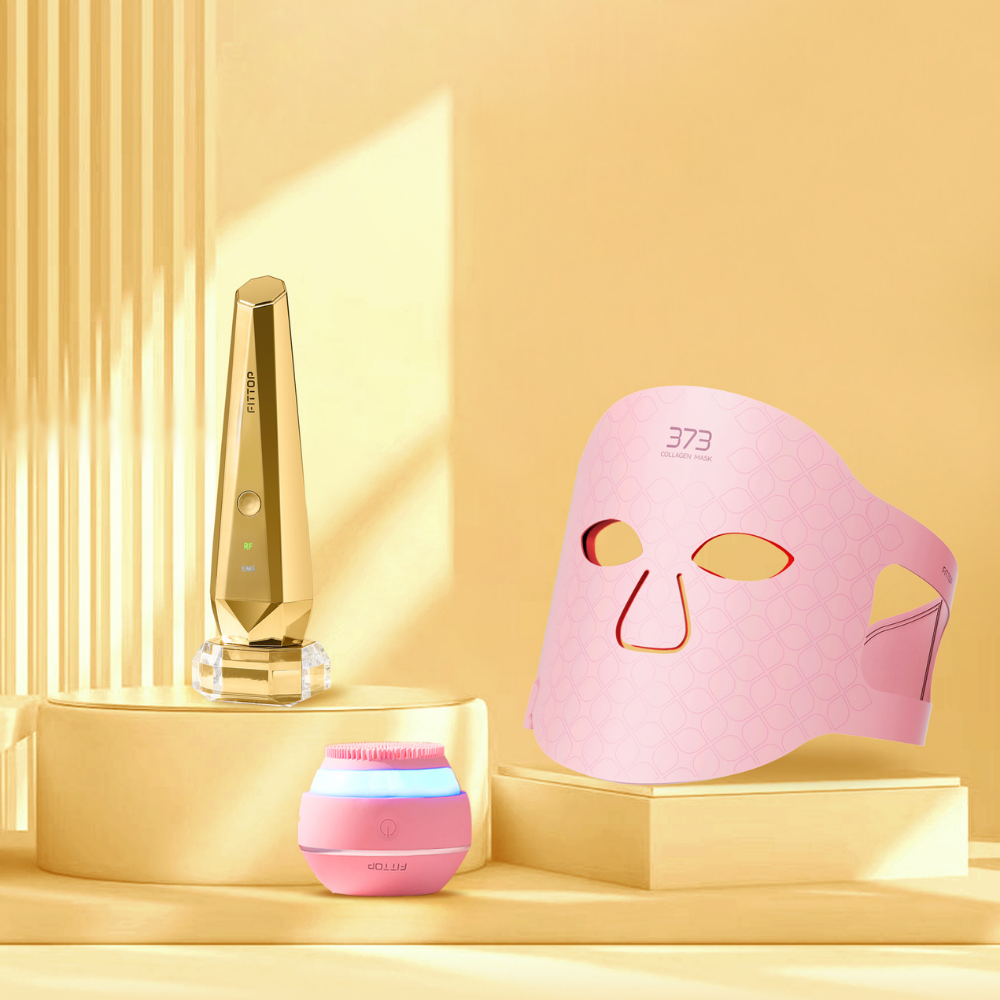
Conclusion
In conclusion, both red light and blue light therapy have their own unique benefits and uses. Red light therapy is primarily used for skin rejuvenation and anti-aging purposes, while blue light therapy is mainly used to treat acne and other skin conditions. Both treatments are safe and effective, and can be done at home using specialized devices. If you are looking to improve your skin health, consider incorporating red light or blue light therapy into your skincare routine.




